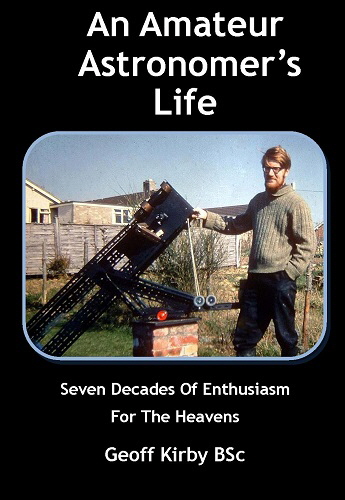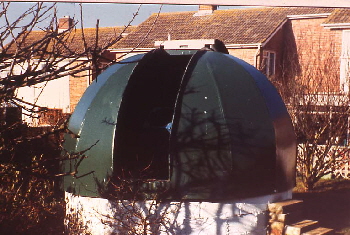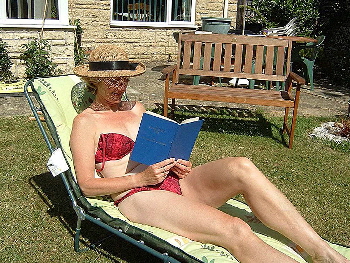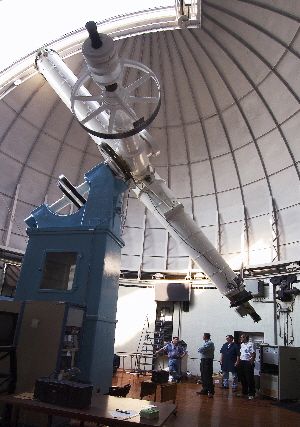|
To browse my collection of books please click on the ‘Home’ link above.
This book has been published as a paperback and can be ordered from Amazon by clicking here
 Geoff Kirby’s passion for astronomy started in 1943 when, as a small child living in bomb shattered London, he watched Nazi ‘Doodlebug’ missiles flying over to deliver death and destruction against the backdrop of the night sky in blacked out London. Geoff Kirby’s passion for astronomy started in 1943 when, as a small child living in bomb shattered London, he watched Nazi ‘Doodlebug’ missiles flying over to deliver death and destruction against the backdrop of the night sky in blacked out London.
The following seven decades of enthusiasm for the heavens have been captured in this book of six hundred generously illustrated pages.
He shares his experience of choosing binoculars and telescopes as well as observing the Moon, Sun, planets, stars, meteors and artificial satellites.
Geoff has built several telescopes, observatories and camera guiding systems.
The book cover photograph seen at left - taken in 1972 - shows Geoff with his reflecting telescope which was made almost entirely from scrap materials apart from the main 215 mm diameter mirror which he ground and polished himself using a £15 commercial kit.
This emphasis on low cost self-build equipment has enabled him to study the heavens on a low budget.
Over forty projects are described which can be pursued either individually or by groups of astronomy club members. Many of these projects require nothing more than the unaided eye or binoculars and are suitable for inspiring both children and adults into looking up and enjoying the heavens.
Geoff joined the British Astronomical Association (BAA) in 1959 and closely observed the decades of internecine and acrimonious squabbling which marred its image and resulted in a halving of membership numbers between 1975 and 1985.
The membership dwindled at a spectacular rate - much to the relief of a BAA President who - incredibly - wrote in his annual report that - incredibly - wrote in his annual report that
“The drop in membership was very welcome as it relieved pressure on the central administrative staff”
Yes, you read that correctly. The BAA Committee was glad that members were leaving.
This era of chaos was largely ended when Professor Heather Couper CBE became the first female President since the BAA’s creation 94 years previously.
|

|
|
Geoff’s partner settles back to enjoy the hot sunshine whilst reading a book by the Rev. Philip Francis which ‘proves’ that the Sun is actually cold! See Chapter 20 for more weird and wonderful cosmological theories.
|
|
Geoff relates stories of his meetings with the great personalities in British astronomy in the 1960s to the 1990s such as Heather Couper, Nigel Henbest, Henry Hatfield as well as Ethel Granger who had a 13 inch circumference waist; the smallest ever recorded worldwide. Her waist was the same size as a one litre bottle of wine. Please click here to see the extremely corseted Ethel on the front cover of Vogue magazine.
|

|
|
The huge Washington Observatory telescope used by the author in 1979
|
|
The dark hemisphere of Britain’s most famous amateur astronomer, Sir Patrick Moore is illuminated. Racist, misogynist, hater of Germans and fantasist about a ‘dead’ fiancée as well as some of his wartime exploits, Patrick also had a generous hemisphere which left him in old age with insufficient savings to pay for his care until Dr. Brian May of ‘Queen’ fame stepped in.
Geoff also describes his astronomically-themed travels around observatories in the USA. This included observing through the huge 660mm aperture refracting telescope in Washington DC with which the moons of Mars were discovered by Asaph Hall in 1877.
His travels in the Canary Islands in the 1980s included having special access to the many observatories on the top of La Palma.
In the last chapters of this entertaining and inspiring book Geoff describes his investigations of four diverse topics - Light Pollution, Astrology, ‘Weird Cosmology’ and UFOs.
There are 450 easy-to-follow references to guide readers towards other sources of information and inspiration.
|